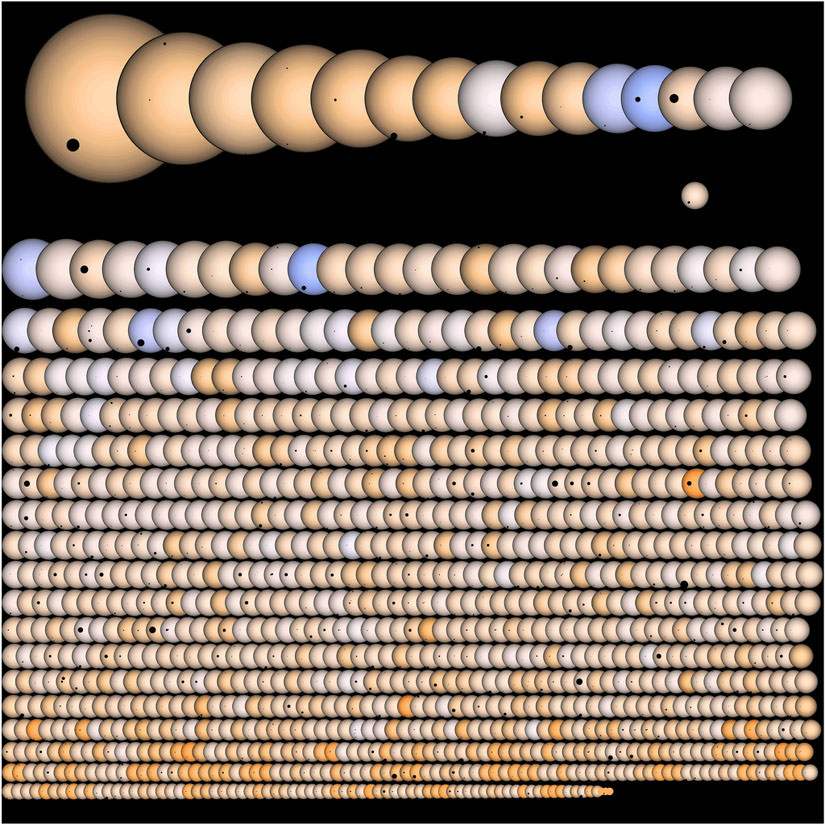[/caption]
Wow. This remarkable visualization shows every Kepler planetary candidate host star with its transiting companion in silhouette. Jason Rowe from the Kepler science team created the image, and the sizes of the stars and transiting companions are properly scaled. For reference, Rowe has included the Sun with a transiting Earth and Jupiter (below the top row on the right by itself.) The largest star is 6.1 times larger that the Sun and the smallest stars are estimated to be only 0.3 times the radius of the Sun. On his Flickr page, Rowe says the colors of the stars represent how the eye would see the star outside of the Earths atmosphere. “Stars have been properly limb darkened and the companions have been offset relative to one another to match the modeled impact parameter. Some stars will even show more than one planet!” he writes.
For more information and high resolution versions of the image, see Jason Rowe’s Flickr page. This image is featured on today’s (March 29, 2011) Astronomy Picture of the Day.


HA… Are we still alone ?
anyone interested in this pic should definitely download the hi-res version from the flickr page. it’s huge!
It’s like abacus for kids.
Ironically some of the abacus likely _contain_ “kids” (biological descendants). Around 5 habitable terrestrials already; I’ll put the odds high.
What amazes me is the miniscule sizes of some of the apparent planets. The accuracy of the detection is just ridiculous!
But at the opposite end, some of the candidate planets are massive. The one against the largest star seems to be roughly 1/3 to 1/2 the diameter of our Sun. In fact it’s bigger than many of the small stars at the opposite end of the scale. Is that really correct? I thought that at that sort of size current models suggest that it would collapse into being a star in its own right? Is Kepler able to distinguish between a huge gas giant and a small brown dwarf?